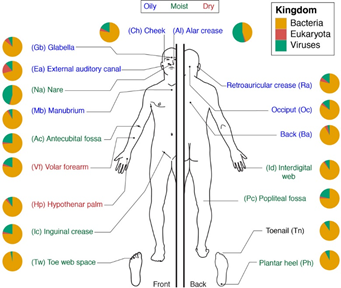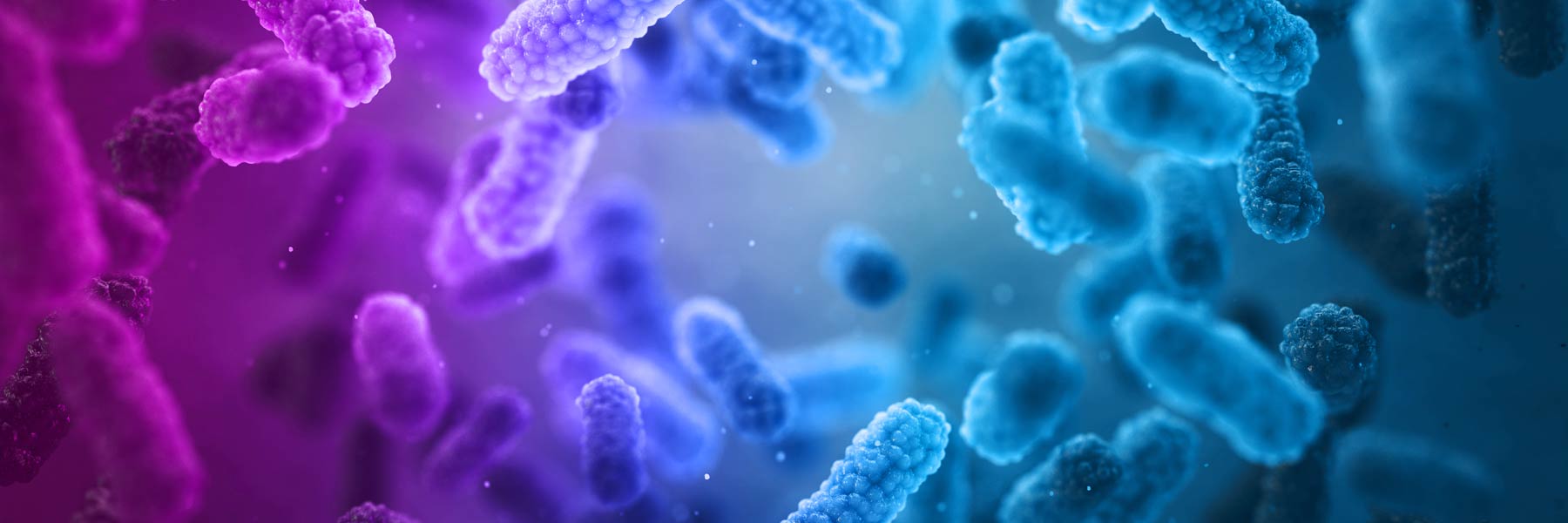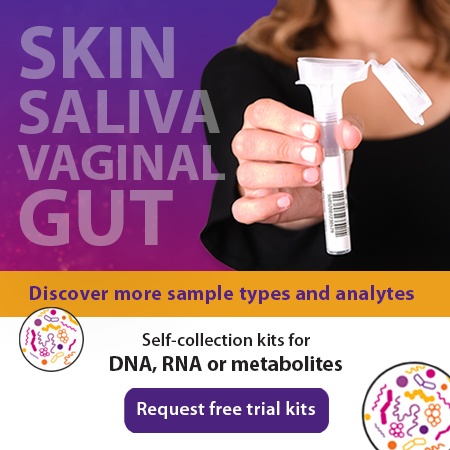2020-08-06
Skin is the largest organ of the body. It keeps our internal organs protected and acts as an interface between the body and the external environment. Recently, there has been a growing interest in skin microbiome in different fields such as the cosmetics industry and dermatology. However, when studying the skin microbiome, many considerations need to be taken into account when collecting a skin microbiome sample.
Here are 4 important factors to consider when collecting skin microbiome samples:
1) Low Bio-mass
Unlike most well studied microbial collection sites on the human body, skin is one of the most difficult due to its low biomass. The inherent challenge associated with skin sample collection means that most microbiome studies to date have focused on higher biomass areas like the gut and mouth.
- A gut microbiome sample (collected with OMNIgene•GUT) can yield about 12± 1.49 µg of DNA[1].
- A skin microbiome (collected from oily skin where bio-load is highest) can yield about 151 ± 78 ng[2] of DNA.
2) Different skin sites
The skin’s surface consists of diverse micro-environments, with different pH levels, temperature, moisture, sebum content, and topography depending on the skin site. These differences influence the bacterial and fungal species found on these various skin’s surfaces, ranging from oily skin to dry. [3]
There are 3 major environments on the skin:
- Sebaceous (Oily)
- Wet (Moist)
- Dry
“The physical properties of the three different skin sites make skin microbiome collection challenging due to the varying amount of biomass.” – Brice LeFrançois, R&D Scientist at DNA Genotek.
Our current study confirms that sebaceous (oily) skin contains more bacteria due to the high level of nutrients present in these areas. Examples of sebaceous skin locations are the scalp and face. Dry skin has fewer nutrients for bacteria to thrive on and therefore contains the lowest microbial biomass of all skin surfaces. Examples of dry skin areas are the forearms and legs. Finally, wet/moist skin provides an optimal environment for proliferation of humidity loving bacteria. Examples of wet skin locales are toe webs and armpits.
When studying diseases related to the skin microbiome, many are often present in site-specific areas, such as eczema in arm and leg creases (moist) or psoriasis on the elbows and knees (dry). [3]
“The physiological heterogeneity and variable microbial biomass of the skin pose unique technical and analytical challenges for metagenomic studies. Each site on the human skin is constrained by ecological properties such as host microenvironment, yet possesses a distinct biogeography than significantly influences microbial diversity, composition, and biomass.” – Oh et al. (2017)

Figure 1. Different skin sites on the human body. Picture from Oh J et al. Biogeography and Individuality Shape Function in the Human Skin Metagenome. Nature. 514(7520):59-64. (2014) doi: 10.1038/nature13786.
When collecting microbiome samples from these different skin sites, it is important to consider that the skin has varying microbial conditions, making skin microbiome collection challenging.
3) Collection method usability and instructions for use (IFU)
If you are planning to collect skin microbial samples, you should consider the donor experience, including how your volunteers will perform the collection. Having easy to follow instructions for use (IFU) as part of your sample collection method is important to make sure each collection is successful. As previously stated, as skin microbiome has very low biomass, collection must be done correctly to ensure accurate results. If the IFU has been optimized and rigorously tested/trialed with a variety of donors you will ensure a better collection performance by the donor.
4) Collecting enough DNA yield for downstream applications
There are currently two popular methods for skin microbial collection: swabs and tape strips. Using a swab generally captures enough bacteria for DNA extraction or to perform a small culture. Tape strips are believed to collect microbes that are deeper in the pores of the skin but still do not always procure sufficient yields for downstream analysis because of their impact on extraction.
Another consideration is the bioburden contamination of the product chosen to collect your sample or the microbiological contamination level already present in or on the collection device (“kitome”). It is possible that using a typical swab or tape strips will generate background noise that represents contaminants present prior to the collection. At the downstream analysis step, the low biomass skin microbial composition will potentially be under represented or simply masked by this bioburden contamination.
Having a collection method that generates high DNA yields with as little intrinsic contamination as possible is crucial to obtain an accurate microbial profile of the collected sample.
With all these important considerations in mind, how does one successfully collect skin microbiome samples?
We have acknowledged these considerations and, through our microbiome services team at Diversigen and development collaborations, are in the process of developing our new skin microbiome collection device. Our new microbiome skin product will overcome many of the challenges of skin sampling (low biomass, different skin types, collection complexity) and will collect enough materials for downstream applications such as qPCR, 16S and WGS sequencing.
Set to launch for research use in the coming weeks, our skin product has been validated to collect skin microbial samples from the three different skin sites (sebaceous, wet, and dry) using a wetting agent and added pressure from the end user to efficiently collect enough skin microbial DNA suitable for downstream applications.
“Proper collection and high yields are key to making sure you are looking at the real microbiome profile rather than at the background contaminants in your downstream assay. We are developing a product that will do just that.” – Brice LeFrançois, R&D Scientist at DNA Genotek.
If you are interested to learn more about collecting skin microbiome you can click the button below to request free trial kits, or contact us at info@dnagenotek.com.
References:
[1] https://dnagenotek.com/ROW/products/collection-microbiome/omnigene-gut/OM-200.html
[2] DNA Genotek product validation data
[3] Oh J et al. Biogeography and Individuality Shape Function in the Human Skin Metagenome. Nature. 514(7520):59-64. (2014) doi: 10.1038/nature13786


